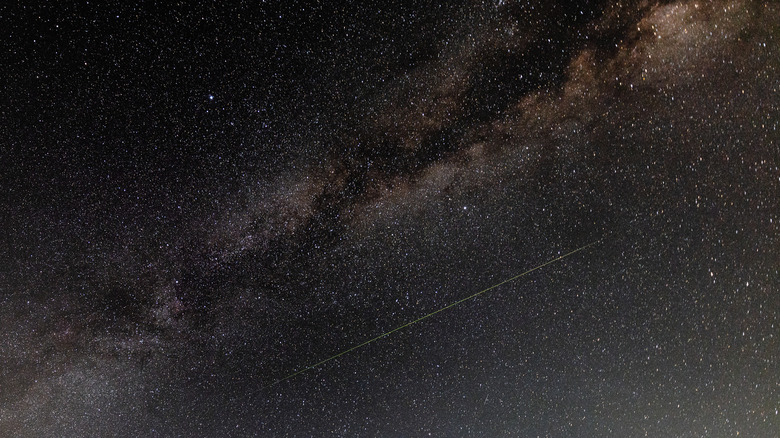What Is The Great Attractor And Why Is It Pulling Our Galaxy Toward It?
Certain behaviors of the universe are inconvenient for theories of physics, necessitating hypothetical objects and substances to make things work. The movement of galaxies can't be accounted for under our understanding of gravity without a lot of unseen mass, hence proposals for dark matter. The accelerating expansion of the universe requires an explanation, hence the as-yet directly unobservable dark energy. And then there's the way our own Milky Way moves around the universe, hence a postulated Great Attractor.
According to Ars Technica, it's been observed since the 1970s that the Milky Way and its nearest neighbors were not behaving in a way predicted by Hubble's law, which describes the movement of objects away from Earth at a rate proportional to their distance from it. Based on that constant, we and our cosmic neighborhood shouldn't be getting pulled toward the constellation Centaurus the way we are. The prevailing explanation is the Great Attractor, a large mass (300 million light-years in diameter according to Britannica) about 147 million light-years away that exerts a strong enough gravitational pull to drag the Milky Way and company in its direction.
We don't know what the Great Attractor is
Per Big Think, the Great Attractor is believed to be at the very heart of the Laniakea supercluster, the group of galaxies to which the Milky Way belongs, along with some 100,000 other galaxies. That it's there seems evident by observation and calculation. What it is, exactly, remains unclear.
Part of the reason we don't know what the Great Attractor might be is that it's in a region of space we can't directly observe. Because of where Earth is positioned within the Milky Way, a band of dust within the galaxy obscures our view of the sky in that direction. It's known as the Zone of Avoidance, and while infrared and X-ray technology have allowed astronomers to begin mapping that region of space, they haven't created a complete picture yet.
Prevailing ideas for what the Great Attractor might be include a gathering point of dark energy — strong enough to work against the regular tendency of dark energy to push cosmic objects away from one another at increasing speed as the universe expands. The Great Attractor might also be a great hunk of mass. Per Space, the Norma cluster, a great collection of gas and galaxies already pulled in by gravity, is in the region of the Great Attractor. And it's better conceived of as an area in space rather than a specific object — one representing the gravitational focal point of nearby matter.
The Milky Way will probably never reach the Great Attractor
With direct observations of the Great Attractor still impossible, and with indirect mapping of that region of space still ongoing, astronomers can't say for certain what the Great Attractor means for the future of Earth and the Milky Way. Per Big Think, one theory suggests that the behavior of the Great Attractor — and the galaxies that it's pulling in — represent in miniature what will ultimately become of the universe: the Big Crunch. In this scenario, everything in existence will ultimately be pulled and mashed together, potentially triggering another Big Bang.
In another theory, the Milky Way never reaches the Great Attractor. Per Ars Technica, it's widely anticipated that dark energy, which is believed to already be driving the accelerated expansion of the universe, will tear apart superclusters like the Laniakea group that the Great Attractor is at the center of. Smaller groups of galaxies will remain together, but they will be thrown apart from one another, and the collapse into the Great Attractor that would otherwise be, won't.


